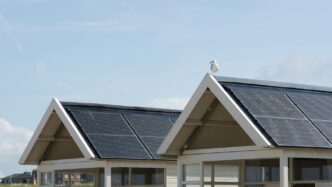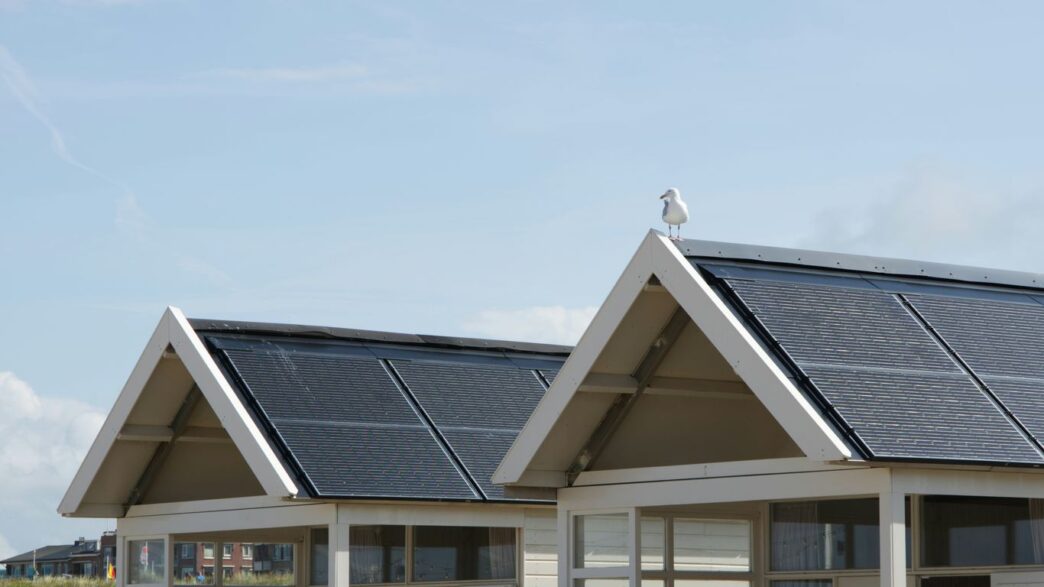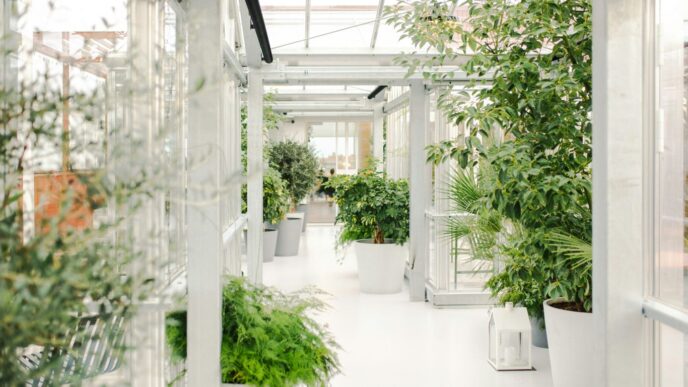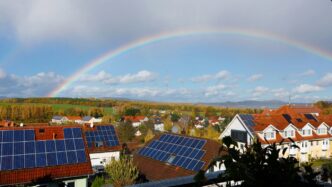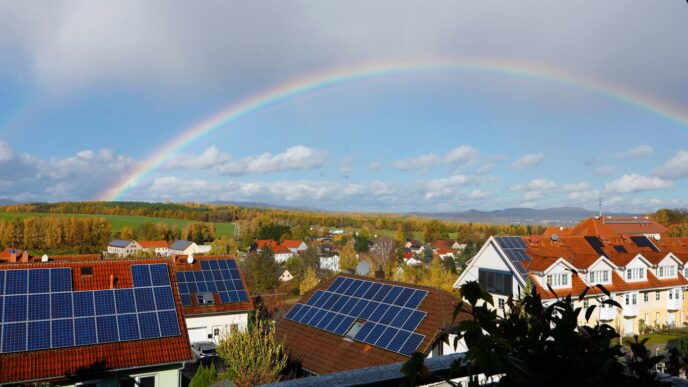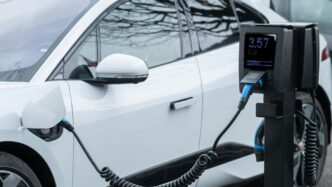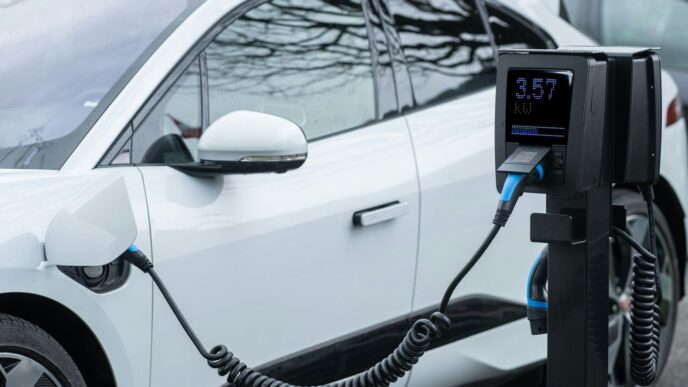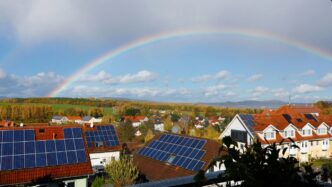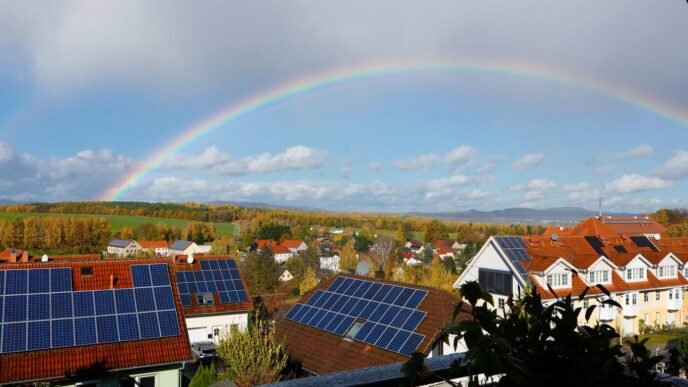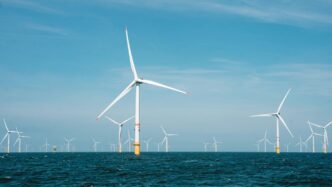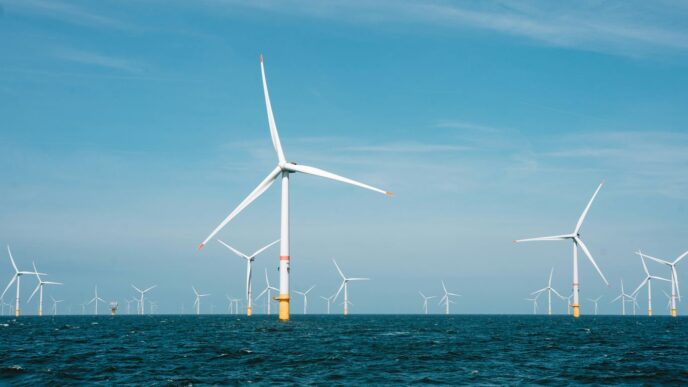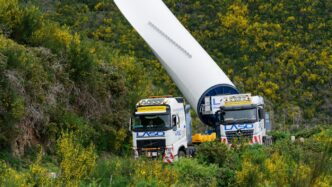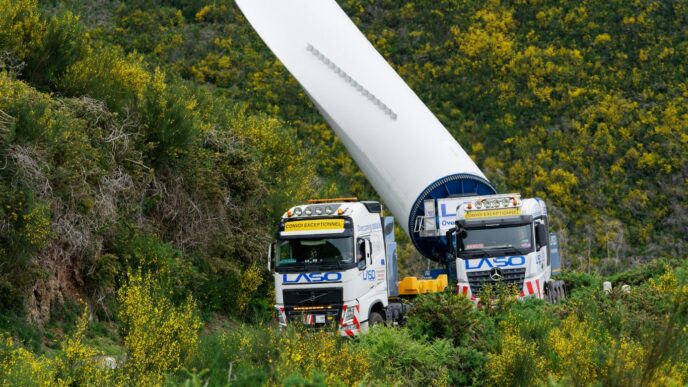It’s a busy time in the world of renewable energy, and keeping up can feel like a full-time job. From big investment shifts to new tech popping up, there’s always something happening. We’re seeing more money go into clean power than ever before, which is great news for the planet. But it’s not all smooth sailing; there are definitely some hurdles to jump over. This article breaks down the latest renewable resource news and what it means for the future.
Key Takeaways
- Clean energy investments are booming, significantly outpacing fossil fuels, with trillions of dollars now flowing into the sector.
- Despite growth, challenges like grid instability, slow permitting, and a need for more skilled workers persist.
- New technologies like advanced energy storage, Agri-PV, floating solar, and offshore wind are expanding renewable options.
- The United States and China are leading renewable energy growth, but emerging markets are also showing strong potential.
- Government policies, international partnerships, and a general optimism about the market’s trajectory are driving the adoption of renewable resources.
Global Renewable Resource News and Investment Trends
It’s pretty wild how fast things are changing in the world of renewable energy. We’re seeing a massive surge in clean technologies, and honestly, it feels like it’s happening overnight. The amount of money pouring into these green solutions has officially doubled the investment going into fossil fuels. This isn’t just a small shift; it’s a fundamental change in how we’re powering our planet. Think about it – we’re talking about trillions of dollars now being directed towards solar, wind, and other clean sources. This rapid growth is reshaping entire industries and creating new opportunities, though it’s not without its bumps in the road.
Exponential Growth in Clean Technologies
The numbers are pretty staggering. Global investment in clean tech is now around $2 trillion annually. This isn’t just a little bit more than fossil fuels; it’s twice as much. This kind of exponential growth means we’re seeing new projects pop up everywhere, and the technology itself is getting better and cheaper at a pace we haven’t seen before. It’s exciting, but it also means we need to keep up.
Shifting Investment Landscape: Renewables Outpace Fossil Fuels
For a long time, fossil fuels were the go-to for investors. That’s clearly not the case anymore. The investment landscape has done a complete 180. We’re seeing major financial institutions and even governments shifting their focus and their capital towards renewable energy. This trend is driven by a mix of factors, including growing environmental concerns, supportive government policies, and the simple fact that renewables are becoming more economically competitive.
Key Trends Shaping the Green Energy Sector
So, what’s actually driving this whole green energy revolution? A few things stand out:
- Grid Challenges: As more renewables come online, our existing power grids are struggling to keep up. We’re seeing issues with grid saturation and instability, which can lead to delays and bottlenecks. Many grids are old and need serious upgrades to handle the increased electricity demand.
- Policy and Regulation: While things are improving, navigating the permitting and regulatory environments can still be a headache. However, countries like India and China are making strides, showing that better regulations can really help speed things up.
- Talent Shortage: Believe it or not, we need more people! The renewable energy sector is growing so fast that there’s a real shortage of skilled workers. We need to train and recruit millions more people in the coming years to keep pace.
- Cost Fluctuations: While the cost of solar panels and batteries has dropped significantly, there’s still some worry about future price volatility. Higher interest rates in some places are also making projects more expensive to finance.
Challenges and Opportunities in Renewable Energy
So, we’ve talked about all the good stuff happening with renewables, but it’s not all sunshine and smooth sailing. There are definitely some bumps in the road we need to figure out. Think of it like trying to upgrade your old house – exciting possibilities, but also a lot of unexpected problems.
Grid Saturation and Instability Concerns
This is a big one. Our current power grids weren’t really built for the massive influx of renewable energy we’re seeing. It’s like trying to pour a whole lake into a small stream – things can get backed up and unstable. Many grid systems are getting pretty old, and they’re struggling to keep up with the demand. We’re seeing more and more delays just trying to connect new solar and wind farms to the grid. It’s a real bottleneck.
Navigating Permitting and Regulatory Environments
Getting projects approved can still be a real headache. While some places are making it easier, it’s often a slow and complicated process. Different rules in different places, and sometimes those rules change, which makes planning tough. It feels like you need a law degree just to get a project off the ground sometimes.
Addressing Skilled Personnel Shortages
We need more people! As the renewable energy sector grows super fast, there’s a real need for trained workers. We’re talking about needing millions more people in the coming years. It’s not just about installing panels; it’s about designing, maintaining, and innovating. Companies are trying to train more folks, but it’s a race to keep up with demand.
Managing Project Costs and Interest Rate Volatility
While the cost of things like solar panels has come down a lot, which is great news, there are still worries. Interest rates going up in some areas can make borrowing money for big projects more expensive. This means the overall cost of building new renewable energy facilities can jump around, making it harder for investors to predict returns. It’s a balancing act between cheaper tech and the cost of financing.
Emerging Technologies and Innovations in Renewables

The renewable energy world isn’t standing still; it’s constantly cooking up new ideas and improving old ones. It feels like every week there’s some new gadget or method promising to make clean energy even better, cheaper, or more accessible. Let’s look at some of the cool stuff happening.
Advancements in Energy Storage Solutions
Batteries are a big deal, obviously. We’re not just talking about the same old lithium-ion anymore. Companies are really pushing for safer and more efficient options. Think solid-state batteries – they’re supposed to be much less likely to catch fire and can pack more power. Then there are flow batteries, which are kind of like giant, rechargeable fuel cells. They’re great for storing massive amounts of energy for the grid. The main goal here is to make sure we can store all that solar and wind power when it’s sunny and windy, so we have it when we need it, even when the weather’s not cooperating. This ability to store energy reliably is key to making renewables a constant power source.
The Rise of Agri-PV, Floating Solar, and Offshore Wind
Land can be a bit of a headache for solar farms, right? So, people are getting creative. Agri-PV, or agrivoltaics, is where you put solar panels over farmland. It sounds weird, but it can actually work out. The panels can provide shade for certain crops, reducing water needs, and you still get electricity. It’s a win-win if you get the setup right. Then there’s floating solar – basically, solar farms on reservoirs or lakes. It saves land space and the water can even help keep the panels a bit cooler, making them more efficient. And offshore wind? It’s getting bigger, literally. We’re seeing bigger turbines and also floating platforms that can be used in deeper waters where fixed foundations aren’t possible. This opens up a whole new world of wind energy potential.
AI, Machine Learning, and Digitalization in Solar Development
Computers are getting really smart, and they’re helping us build and manage solar projects better. Artificial intelligence and machine learning are being used to figure out the best spots for solar farms, predict how much energy they’ll produce, and even spot problems before they happen. Think of it like a doctor for your solar panels, catching issues early. Digital tools also help with planning and keeping track of everything. This makes the whole process smoother, from picking the site to making sure the electricity gets to your home without a hitch. It’s all about using data to make smarter decisions.
Breakthroughs in Hydrogen Production and Carbon Recycling
Hydrogen is getting a lot of buzz as a clean fuel, especially for industries that are hard to electrify, like heavy transport or manufacturing. The real game-changer is ‘green hydrogen,’ which is made using renewable electricity to split water. This process creates hydrogen with zero carbon emissions. Beyond just making hydrogen, there’s also work being done on ‘carbon recycling.’ This involves capturing carbon dioxide emissions and turning them into useful products, like fuels or chemicals. It’s a bit like closing the loop on pollution, turning a waste product into something valuable. These technologies could be huge for cleaning up sectors that are tough to decarbonize with electricity alone.
Geographical Hotspots for Renewable Energy Growth

When we look at where all this renewable energy action is happening, a few places really stand out. It’s not just about having the most sun or wind, but also about the policies and investments that make it all possible. The United States and China are currently leading the pack in terms of renewable energy potential and development. They’ve got massive markets and are pouring a lot of money into clean tech, which makes sense given the global push for sustainability.
But it’s not just the usual suspects. We’re seeing some really interesting growth in emerging markets too. Countries that might not have been on the radar a few years ago are now making big moves. This is super important because it means the benefits of renewable energy are spreading out, not just staying in a few wealthy nations.
Here’s a quick look at some of the key players and trends:
- United States and China: These two giants are way ahead. They’re not only building a lot of solar and wind farms but also investing heavily in the technology behind them. Think advanced batteries and smarter grids. A lot of the global investment in clean tech, which is now double what fossil fuels get, is flowing into these regions.
- Emerging Markets Gaining Traction: Keep an eye on places like Brazil and India. They’re showing serious potential and are starting to attract more investment. Even smaller markets in places like North Africa and South America are getting attention. This diversification is a good sign for the global energy transition.
- Country-Specific Energy Transition Assessments: It’s not a one-size-fits-all situation. Each country has its own challenges and opportunities. Some are great at getting permits sorted, while others are still figuring out how to deal with grid stability as they add more renewables. Understanding these country-level details is key to seeing the full picture.
It’s pretty exciting to see where the world is putting its energy resources. The map of renewable energy growth is definitely changing, and it’s going to be fascinating to watch how these hotspots develop over the next few years.
Policy and Collaboration Driving Renewable Adoption
It’s pretty clear that getting more renewable energy online isn’t just about building more solar panels or wind turbines. There’s a whole lot of behind-the-scenes work involving governments and different organizations that makes it all happen. Think of it like building a house – you need the materials, sure, but you also need permits, zoning laws, and sometimes even neighborhood cooperation to get it done.
Government Incentives and Regulatory Frameworks
Governments around the world are stepping in with a mix of carrots and sticks to push renewable energy forward. We’re seeing a lot of direct investment, with trillions of dollars being put into clean technologies. However, this money isn’t spread out evenly. A big chunk of it is concentrated in just a few places like China, the EU, and the US. This makes you wonder if everyone’s getting a fair shot at clean energy.
To really get things moving, countries are using things like:
- Tax credits: These make it cheaper for companies and individuals to invest in renewable projects.
- Subsidies: Direct financial support helps lower the cost of renewable energy, making it more competitive with traditional fuels.
- Clear targets and regulations: Setting ambitious goals for renewable energy use and creating predictable rules helps businesses plan and invest with more confidence.
Phasing out support for fossil fuels is also on the table, which would level the playing field even more. It’s a complex dance, trying to balance economic growth with environmental goals, and policies are key to that.
International Union for Conservation of Nature and IRENA Partnership
It’s not just national governments. International groups are teaming up too. For instance, the International Union for Conservation of Nature (IUCN) and the International Renewable Energy Agency (IRENA) have joined forces. Their goal is to make sure that renewable energy projects not only help the planet by reducing emissions but also work with nature and benefit local communities. This kind of collaboration is important because it brings together different kinds of knowledge – one group knows about conservation and ecosystems, the other knows about energy systems. It’s about finding solutions that are good for the environment and good for people.
Commitments to Accelerate Renewable Energy Abundance
Beyond specific partnerships, there’s a broader push from leaders in both government and business to speed things up. They’re making public commitments to ramp up renewable energy deployment. This isn’t just talk; it’s about setting ambitious goals and promising to take action to achieve them. The idea is to create a future where clean energy is plentiful and accessible for everyone. These collective commitments signal a strong global will to transition away from fossil fuels and embrace a sustainable energy future.
Future Outlook for Renewable Resource News
Energy Storage Dominating Future Growth Areas
When you look at where the renewable energy sector is headed, one thing really stands out: energy storage. It’s not just a side player anymore; it’s becoming the main event. Experts are pointing to storage solutions as the biggest growth area over the next five years. Why? Because renewables like solar and wind can be a bit unpredictable – the sun doesn’t always shine, and the wind doesn’t always blow. Storage systems are the key to making sure we have power when we need it, smoothing out those ups and downs. Think of them as the reliable backup that keeps the lights on.
Green Hydrogen as a Key Decarbonization Tool
Another big piece of the puzzle is green hydrogen. This isn’t just some futuristic idea; it’s being seen as a really important way to cut down on carbon emissions, especially in industries that are tough to electrify. We’re talking about heavy manufacturing and transportation where batteries just don’t cut it. Producing hydrogen using renewable energy means we can power these sectors without adding to pollution. It’s a game-changer for cleaning up parts of our economy that have been hard to tackle so far.
Optimism and Confidence in the Renewables Market Trajectory
Despite the hurdles we’ve talked about, there’s a lot of positive energy in the renewable market. Most folks working in the industry feel really good about where things are going. They’re giving the market’s future a high rating, and that confidence is backed by real progress. We’re seeing more renewable capacity being added all the time, thanks in large part to solar power and supportive government policies. It seems like people are genuinely excited about the direction we’re heading, and that optimism is a powerful force for continued growth and innovation in clean energy.
Wrapping Up: What’s Next for Renewables?
So, it’s pretty clear that renewable energy is really taking off. We’re seeing huge investments, and lots of smart people are feeling good about where things are headed. There are still some bumps in the road, like making sure the power grids can handle everything and getting enough trained workers. But with new tech popping up all the time, like better batteries and smarter ways to use land, it feels like we’re moving in the right direction. Keep an eye on this space, because the changes happening now are going to shape how we power our world for a long time to come.

